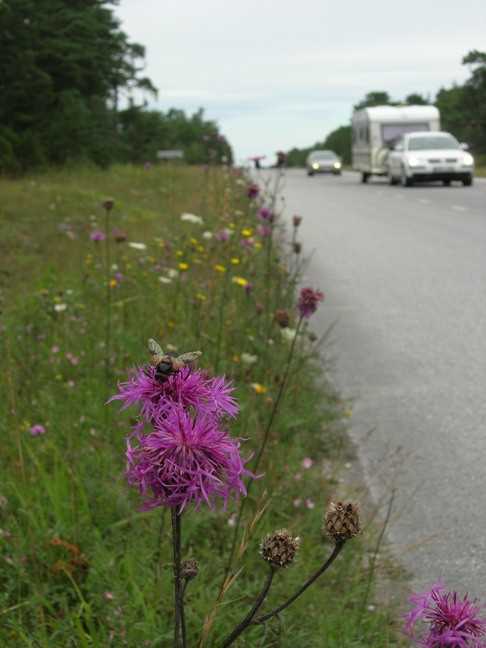The Aim
We would like this network to inspire you to restore nature and to inform you how to do it. To achieve this aim, we will work with governments that want you to enhance nature and not merely to leave it alone. We will help land-using business that seeks to conserve as well as to control nature. We will encourage volunteer effort and nature-based livelihoods to benefit wild resources. Our ethos is based in charters from the Bern Convention, for activities that support the riches of nature. We favour enjoying nature in as many ways as possible, because “what pays, stays”.
Our Approach

Road verges can be rich in wild flowers and insects.
The loss of nature has crept up on us gradually. With government payments to support food production, hedges were removed to make bigger fields for more efficient machinery. Rough land around farm buildings was lost as these became offices. Biocides cleaned wild plants and insects from farmland, with road verges sprayed to sanitise these too or mowed to aid visibility for increasing traffic.
We seek to guide the start of projects to restore wildflowers and the animals that they support. Many of these animals are a pleasure to watch and photograph, or are useful for making honey or ridding crops of pests. Our flagship species is the Grey Partridge, because this is not only a joy to see but also a challenge to count for management, and to catch for food if abundant enough. There is also much known about its biology, how it is affected by modern farming and how to reverse declines in abundance.
The Grey Partridge was once common but has disappeared across much of Europe due to changes in farming. Efficient modern harvesters leave no cereal seeds on stubbles as winter food. Huge fields sprayed repeatedly with herbicides lose their wild plants, which are another seed source in winter and are essential for healthy insect stocks to feed partridge chicks in summer. Increased use of insecticides further reduced the abundance of chick-food insects. Other changes in farmland also increased the numbers of predators hunting the smaller areas suitable for partridge nests.
Yet field edges can be managed for wild plants and insect predators that control crop-eating insects, as can areas within large fields or at corners hard to reach with large modern machines, to reduce costs of spraying for insect pests. Parks, gardens and road verges can serve as reservoirs for these plants and insects too. So our challenge is, can you manage your local unfarmed areas to bring back the wildflowers, butterflies, bees and even partridges?
By one community, for many communities
The community of falconers is worldwide. Falconers have enjoyed Grey Partridge for centuries and started pioneering restoration, of raptors, some fifty years ago. We are working with the Game and Wildlife Conservation Trust and landowners across Europe, and we also engage with hundreds of other conservation organisations represented by the International Union for Conservation of Nature (IUCN). We are providing this site for local communities and land managers. You are the right people to restore the nature you desire, because you live with it. Therefore this site should be in your language, for your local community and with links to sites in your country. If you would like to start a group to restore wildlife in your area, please use the link below to get in touch.
On the web
You can also click on logos below to learn about the organisations supporting Perdixnet.
Use the Contact Us page to let us know you are interested in helping with translation or forming a community group.
Understand our ethos from the Bern Convention charters hat were developed by members of European Sustainable Use Group.